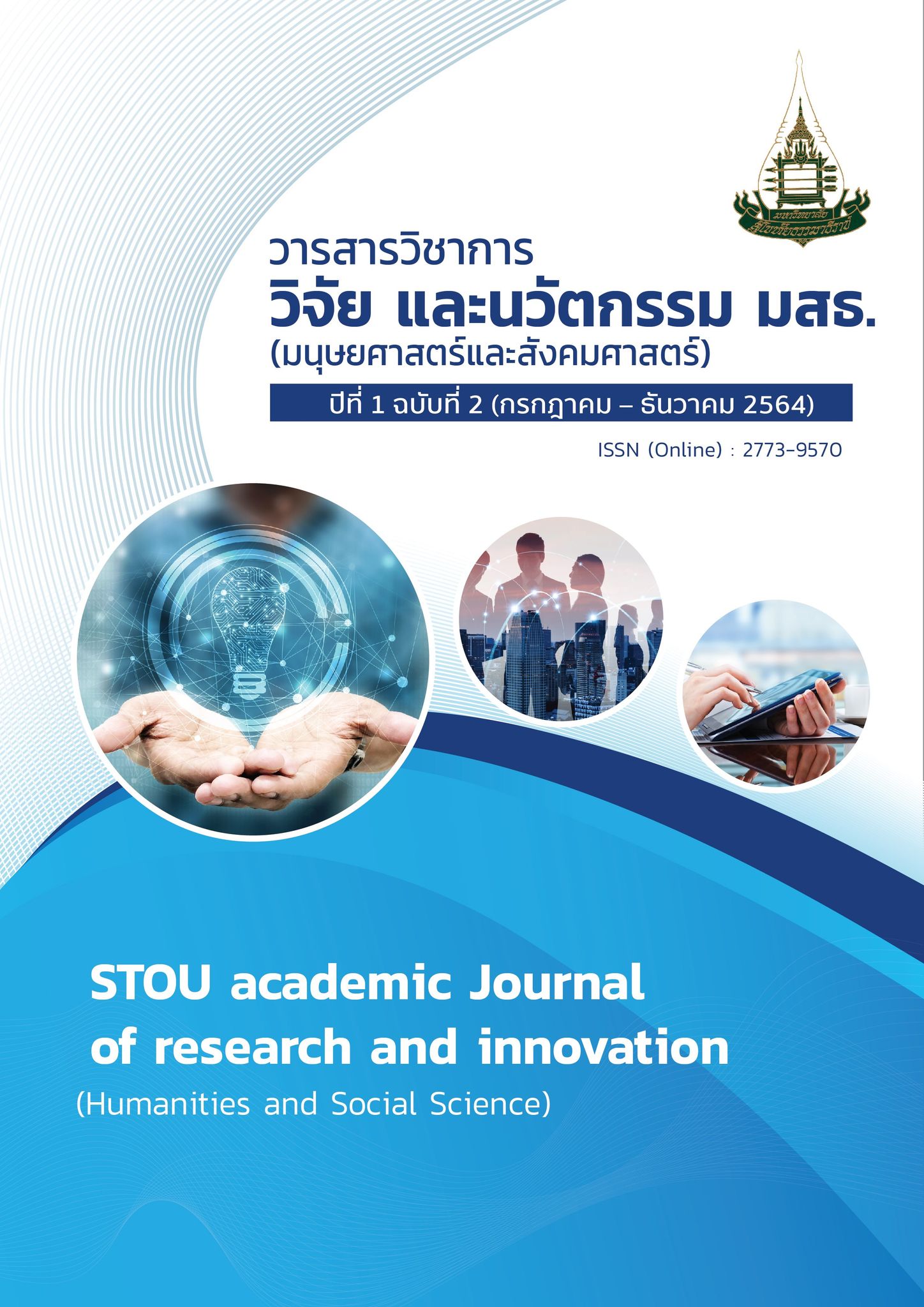UOB Bank's Human Resource Development
Keywords:
Personnel Development, Human Resources, UOB Bank TrainingAbstract
The researcher is interested in studying with the objectives. 1) To study of human resource development level of UOB personnel. 2) To compare human resource development of bank personnel UOB. Classified by personal attribute factors. This study is quantitative research. The population is 1,110 UOB bank employees, a sample calculated according to Taro Yamane's formula. A total of 222 people were obtained and the sample was randomly selected. To collect information by specific random methods Statistics used in data analysis. These are frequency distribution, percentage, standard deviation. For analytical statistics, one-way ANOVA t-test and F-test were used and paired comparisons were performed using Schefe's method.
The results showed that the overall level of human resource development of UOB personnel was at a high level ( = 3.55; SD = 0.47). When considering each aspect, it was found that the education aspect had the highest average (
= 3.58; SD = 0.54), followed by training (
= 3.54; SD = 0.54) and development aspect (
= 3.53; SD = 0.91). The results of the comparison of human resource development of UOB personnel, classified by factors of personal characteristics found that UOB employees of different genders, ages and job positions. The level of human resource development overall and individually aspect was not significantly different p > 0.05. However, employees of UOB had different of education levels. There were significantly different levels of human resource development, p < 0.05.
The results of this study showed that UOB Bank should focus on education, both in the process. Recruit employees with higher education levels. Improving employee of education levels in various ways and developing human resource development plans, which will affect the knowledge development, competencies, skills of employees, including the development of human resources with efficiency and effectiveness.
References
ณัฏฐพันธ์ เขจรนันทน์. (2545). การจัดการทรัพยากรมนุษย์. กรุงเทพฯ: ซีเอ็ดยูเคชั่น.
ดนัย เทียนพุฒ. (2542). กลยุทธ์การพัฒนาคน: สิ่งท้าทายความสำเร็จของธุรกิจ. กรุงเทพฯ: จุฬาลงกรณ์มหาวิทยาลัย.
ธำรงศักดิ์ คงคาสวัสดิ์. (2550). ทุนมนุษย์ การกำหนดตัวชี้วัดเพื่อการพัฒนา. กรุงเทพฯ: สมาคมส่งเสริม-เทคโนโลยี (ไทย-ญี่ปุ่น).
พิชิต เทพวรรณ์. (2554). การจัดการทรัพยากรมนุษย์เชิงกลยุทธ์: แนวคิดและกลยุทธ์เพื่อความได้เปรียบทางการแข่งขัน. กรุงเทพฯ: ซีเอ็ดยูเคชั่น.
สุภาพร พิศาลบุตร และยงยุทธ เกษสาคร.(2545). การพัฒนาบุคคลและการฝึกอบรม. (พิมพ์ครั้งที่ 3). กรุงเทพฯ: วี.เจ พริ้นติ้ง.
สมบัติ กุสุมาวลี. (2552). การบริหารทรัพยากรมนุษย์ในองค์กรตามหลักปรัชญาของเศรษฐกิจพอเพียง. กรุงเทพฯ: สมาคมการจัดกรงานบุคคลแห่งประเทศไทย.
โสภณ ภูเก้าล้วน และ ฐิติวรรณ สินธุ์นอก. (2557). การบริหารทรัพยากรมนุษย์ สำหรับผู้จัดการในสายงานในทศวรรษหน้า. กรุงเทพฯ: แปลน พริ้นติ้ง.
Cronbach, L.J. (1990). Essentials of Psychological Testing. (5th edition). New York: Haper Collins Publishers.





